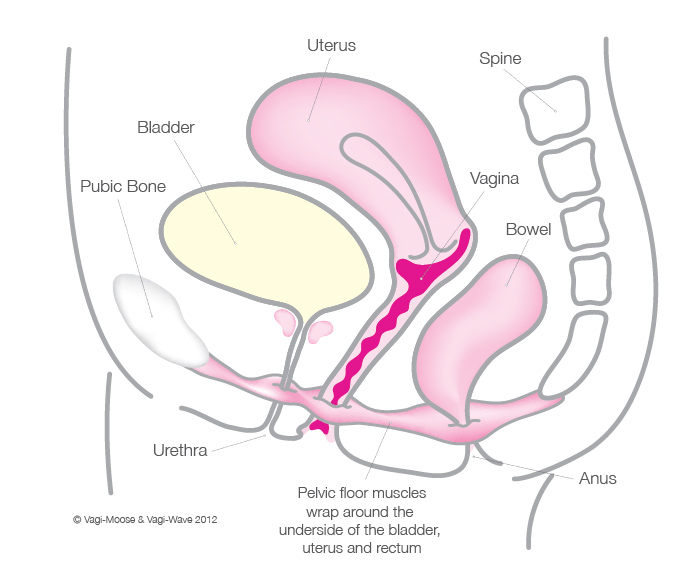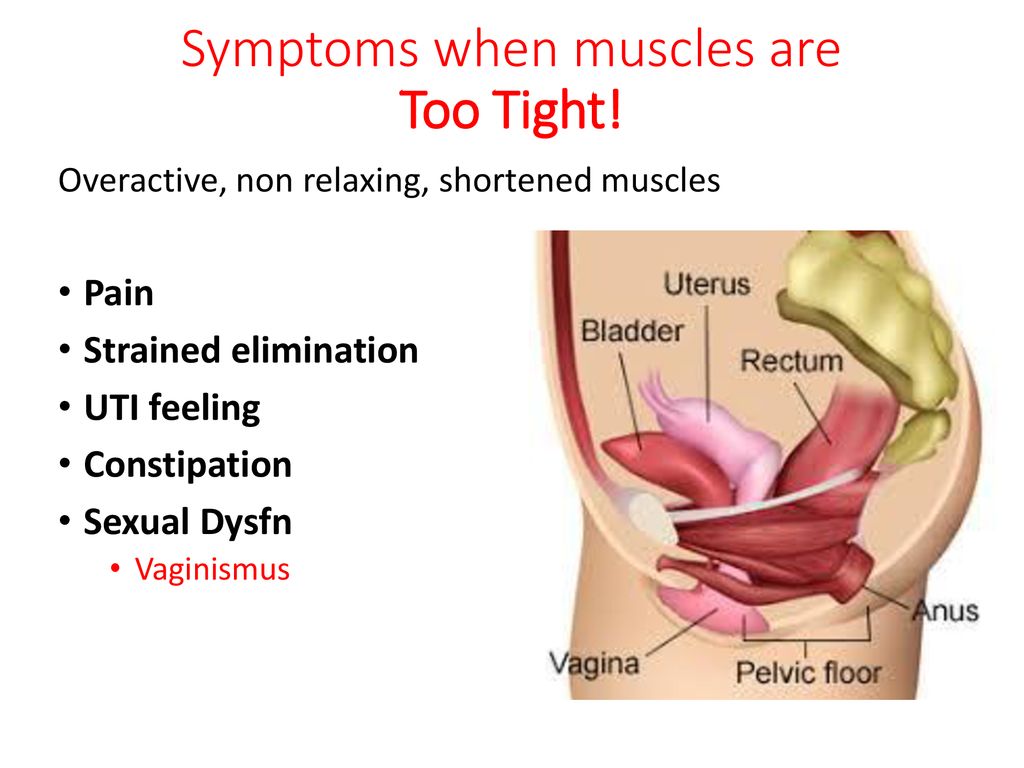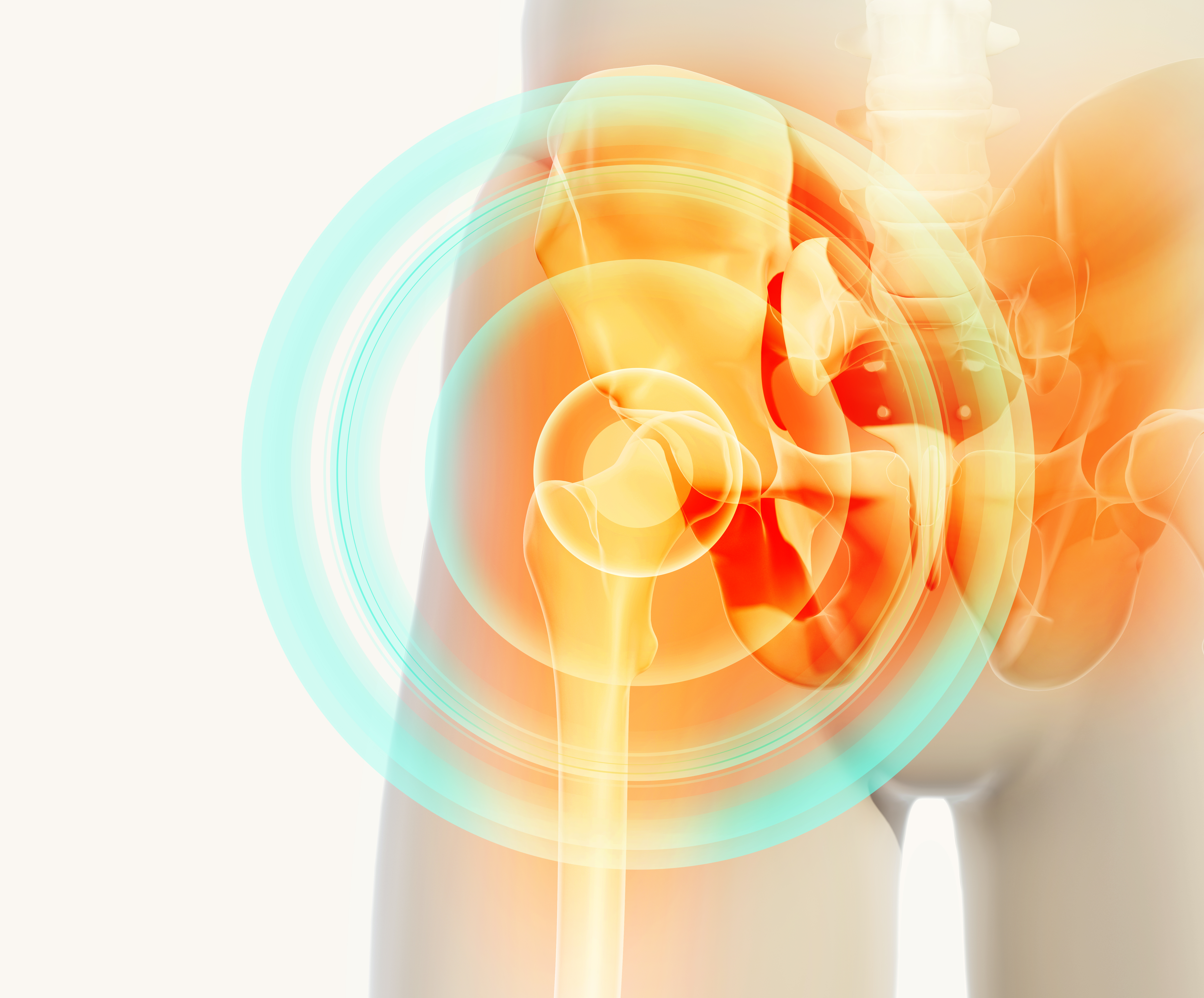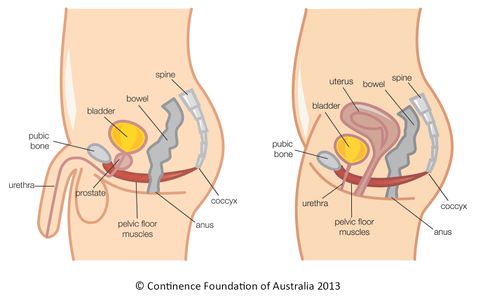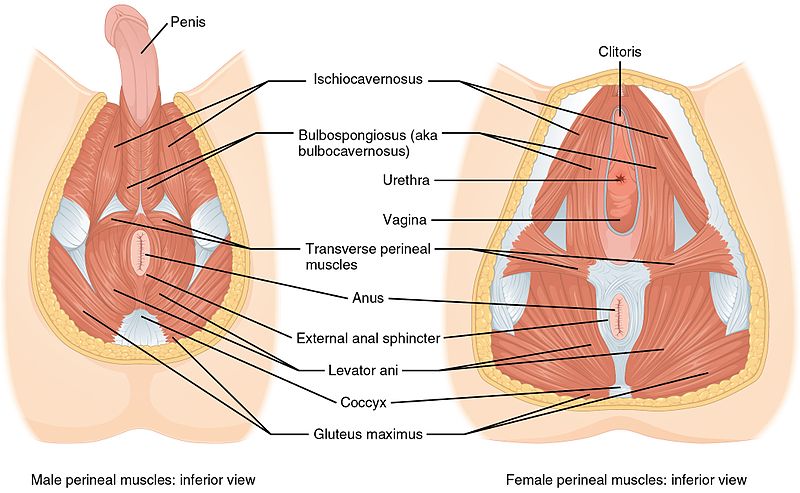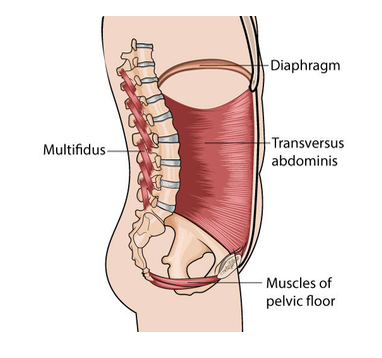They can begin in early childhood as a general discomfort and as the condition develops the symptoms intensify into more severe pain and incontinence issues.
Tight pelvic floor muscles symptoms female.
If you are diagnosed with pelvic floor dysfunction you may experience symptoms including.
The uterus and vagina in women.
This is often the stage where treatment is sought.
Urinary frequency urgency hesitancy stopping and starting of the urine stream painful urination or incomplete emptying.
Pain coming from the pelvic floor can be felt around the sacroiliac joints the pubic symphysis groin hamstrings buttocks iliotibial band and the abdominal and lower back muscles.
You might have even tried some kind of treatment for pain in one of these areas that wasn t effective because the pain is actually coming from your pelvic floor.
Constipation straining pain during or after bowel movements.
That means the pelvic floor muscles are too tight.
Levator ani syndrome is a type of nonrelaxing pelvic floor dysfunction.
Unexplained pain in your low.
The rectum the area at the end of the large intestine where your body stores solid waste.
All the experts who spoke to popsugar agreed that common symptoms of hypertonic pelvic floor muscles are.
The bladder the pouch holding your urine.
Pelvic floor muscle tightness.
Hypertonic muscles can cause the following symptoms.
The pelvic floor supports the rectum bladder and urethra.
Urinary issues such as the urge to urinate or painful urination constipation or bowel strains lower back pain pain in the pelvic region genitals or rectum discomfort during sexual intercourse for women.
Involuntary leakage of stool.
Pelvic pain pressure a bulge somewhere in the lower pelvic region stress urinary incontinence which involves a small amount of urine leaking from the body due to an activity such as.
Back pain difficulty controlling your bladder or bowels and pain or unpleasant sensations.
Depending on the type of pelvic floor dysfunction a person may experience.













